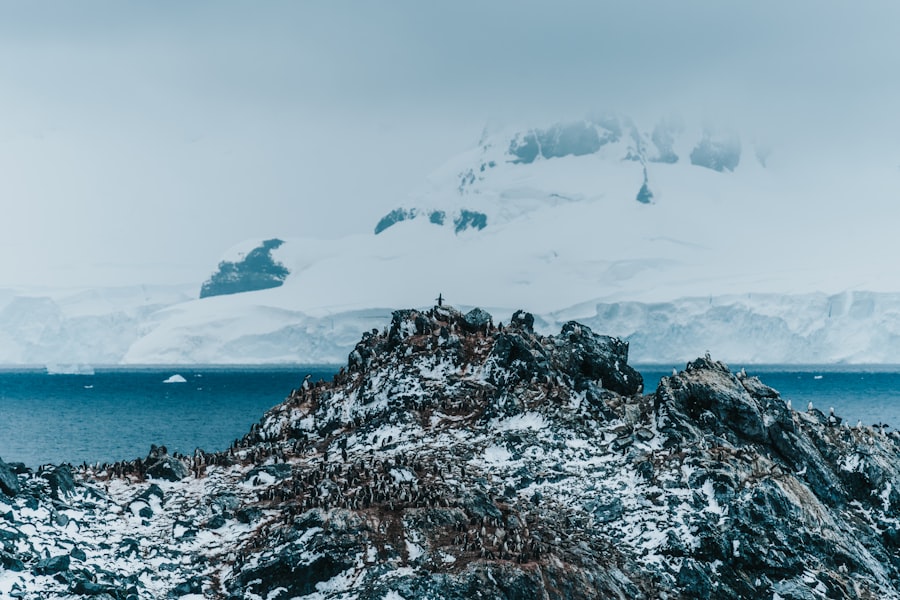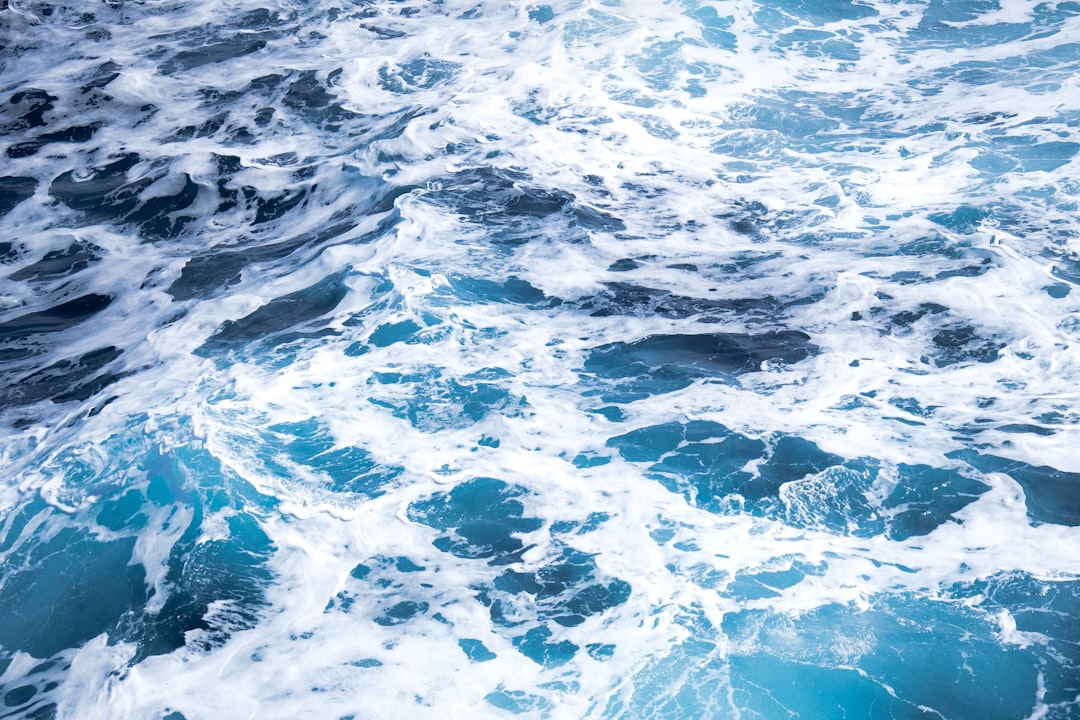The Drake Passage, a body of water that separates South America from Antarctica, is renowned for its tumultuous seas and unpredictable weather. Named after the English explorer Sir Francis Drake, who navigated these waters in the late 16th century, the passage has become a focal point for adventurers, researchers, and wildlife enthusiasts alike. Stretching approximately 600 miles, it serves as a critical maritime route for vessels traveling to and from the Antarctic region.
The Drake Passage is not merely a geographical feature; it embodies the spirit of exploration and the challenges that come with venturing into some of the most remote areas of the planet. Navigating the Drake Passage is often described as a rite of passage for those seeking to explore Antarctica. The waters are notorious for their rough conditions, which can change rapidly, making it both a daunting and exhilarating experience.
For many, crossing the Drake Passage is a testament to human resilience and determination, as it requires not only skillful navigation but also an understanding of the natural forces at play. As travelers embark on this journey, they are met with the thrill of adventure and the promise of breathtaking landscapes that lie beyond the horizon.
Key Takeaways
- The Drake Passage is a treacherous body of water located between South America’s Cape Horn and the South Shetland Islands of Antarctica.
- The geography and climate of the Drake Passage are characterized by strong winds, rough seas, and unpredictable weather patterns due to its location at the confluence of the Atlantic, Pacific, and Southern Oceans.
- The historical significance of the Drake Passage is marked by the exploits of early explorers and the challenges they faced while navigating this perilous route.
- Navigating the Drake Passage poses numerous challenges and dangers, including extreme weather conditions, icebergs, and strong currents that can make it one of the most difficult sea crossings in the world.
- Strategies for safe passage through the Drake Passage include careful route planning, experienced crew, and modern technology to navigate the unpredictable conditions.
Understanding the Geography and Climate of the Drake Passage
The geography of the Drake Passage is characterized by its deep waters and strong currents, which are influenced by the confluence of the Atlantic and Pacific Oceans. This unique positioning creates a funnel effect, amplifying the intensity of waves and winds that can reach staggering heights. The passage is bordered by Cape Horn to the north and the South Shetland Islands to the south, making it a critical junction for maritime traffic heading to Antarctica.
The underwater topography is equally fascinating, with deep-sea trenches and ridges that contribute to the dynamic nature of the waters. The climate in the Drake Passage is notoriously unpredictable, with conditions that can shift from calm to chaotic in a matter of moments. The region experiences strong winds, particularly during the winter months, which can lead to rough seas and challenging navigation.
Temperatures can vary significantly, with frigid air masses from Antarctica colliding with warmer currents from the north. This climatic volatility not only poses challenges for sailors but also creates a unique ecosystem that supports a diverse range of marine life.
Historical Significance of the Drake Passage

The historical significance of the Drake Passage cannot be overstated. It has long been a vital route for explorers and traders seeking to navigate between the Atlantic and Pacific Oceans. Sir Francis Drake’s expedition in 1578 marked one of the first recorded crossings of this treacherous waterway, paving the way for future explorers.
Throughout history, the Drake Passage has served as a gateway to Antarctica, facilitating scientific research and exploration. The passage has been traversed by numerous expeditions, including those led by renowned explorers such as Ernest Shackleton and Robert Falcon Scott.
Their journeys through these waters have become legendary, showcasing both the triumphs and tragedies that accompany exploration in such unforgiving environments. The legacy of these explorers continues to inspire modern adventurers who seek to follow in their footsteps.
Challenges and Dangers of Navigating the Drake Passage
| Challenges and Dangers | Drake Passage |
|---|---|
| Strong Winds | Up to 70 mph |
| Rough Seas | High waves and swells |
| Icebergs | Potential collision hazard |
| Isolation | Remote location |
| Unpredictable Weather | Rapid changes in conditions |
Navigating the Drake Passage presents numerous challenges that can test even the most experienced mariners. The unpredictable weather patterns are perhaps the most daunting aspect, as storms can arise suddenly, creating hazardous conditions for vessels. High waves and strong currents can make steering difficult, leading to potential capsizing or collisions.
Additionally, icebergs and floating debris pose significant risks, particularly during certain times of the year when ice is more prevalent. The psychological toll of traversing these waters should not be underestimated either. The isolation and harsh conditions can lead to feelings of anxiety and fear among crew members and passengers alike.
The vastness of the ocean can evoke a sense of vulnerability, as travelers are reminded of their smallness in comparison to nature’s might. This combination of physical and mental challenges makes navigating the Drake Passage an experience that requires not only skill but also resilience and fortitude.
Strategies for Safe Passage through the Drake Passage
To ensure safe passage through the Drake Passage, mariners must employ a variety of strategies that account for its unique challenges. One crucial approach is thorough preparation before setting sail. This includes studying weather patterns, understanding tidal currents, and being aware of potential hazards such as icebergs or other vessels in the area.
Utilizing advanced navigation technology can also enhance safety by providing real-time data on weather conditions and sea state. Another important strategy involves maintaining open communication among crew members and with other vessels in the vicinity. Establishing clear protocols for emergency situations can help mitigate risks and ensure that everyone on board is prepared for unexpected challenges.
Additionally, training crew members in seamanship skills and emergency response can foster a culture of safety that is essential when navigating such treacherous waters.
Tips for Dealing with Rough Seas and Inclement Weather

For those embarking on a journey through the Drake Passage, being prepared for rough seas and inclement weather is paramount. One effective tip is to dress in layers and wear waterproof gear to stay warm and dry during unpredictable conditions. Proper footwear is also essential; non-slip shoes can provide better traction on wet surfaces, reducing the risk of accidents on deck.
Another valuable piece of advice is to stay informed about weather updates throughout the journey. Regularly checking forecasts and being aware of changing conditions can help travelers make informed decisions about their route and timing. Additionally, practicing mindfulness techniques can assist individuals in managing anxiety during turbulent moments at sea.
Focusing on breathing or engaging in calming activities can help maintain composure when faced with challenging circumstances.
Wildlife and Natural Wonders of the Drake Passage
The Drake Passage is not only known for its challenging navigation but also for its rich biodiversity and stunning natural wonders. The waters teem with marine life, including various species of whales such as humpbacks, orcas, and blue whales that migrate through these waters in search of food. Birdwatchers will delight in spotting seabirds like albatrosses and petrels soaring above the waves, their graceful flight a testament to their adaptation to this harsh environment.
In addition to its wildlife, the Drake Passage offers breathtaking landscapes that captivate all who venture through it. The rugged coastlines of Cape Horn provide dramatic backdrops against crashing waves, while icebergs floating serenely in the water create a striking contrast against the deep blue sea. These natural wonders serve as reminders of nature’s beauty and power, leaving an indelible mark on those fortunate enough to witness them firsthand.
Importance of the Drake Passage for Scientific Research and Exploration
The Drake Passage plays a crucial role in scientific research and exploration, serving as a natural laboratory for studying oceanography, climate change, and marine ecosystems. Researchers utilize this unique environment to gather data on ocean currents, temperature variations, and salinity levels, contributing to a deeper understanding of global climate patterns. The passage’s location at the convergence of two major oceans makes it an ideal site for studying how these bodies of water interact.
Moreover, the rich biodiversity found within the Drake Passage provides valuable insights into marine life and its adaptations to extreme conditions. Scientists conduct studies on various species inhabiting these waters, contributing to conservation efforts aimed at protecting fragile ecosystems in an era of climate change. The passage thus serves not only as a route for exploration but also as a vital resource for advancing scientific knowledge about our planet’s oceans.
How to Prepare for a Journey through the Drake Passage
Preparing for a journey through the Drake Passage requires careful planning and consideration of various factors. Travelers should begin by researching reputable tour operators that specialize in Antarctic expeditions, ensuring they have experience navigating these challenging waters. Understanding what to expect during the journey—such as potential rough seas—can help set realistic expectations and foster a sense of preparedness.
Packing appropriately is another essential aspect of preparation. Travelers should bring warm clothing suitable for cold temperatures, waterproof gear to protect against splashes or rain, and sturdy footwear for moving around on deck. Additionally, bringing seasickness medication or remedies can be beneficial for those prone to motion sickness during turbulent crossings.
By taking these steps, travelers can enhance their comfort and safety while embarking on this remarkable adventure.
Stories and Legends of the Drake Passage
The Drake Passage is steeped in stories and legends that reflect its historical significance and allure as an adventurous destination. Tales abound of shipwrecks and daring rescues that have taken place within its tumultuous waters, each narrative adding to its mystique. One such story involves Captain William Bligh, whose infamous mutiny aboard HMS Bounty led him to navigate these perilous seas in search of safety—a testament to human endurance against nature’s fury.
Additionally, local folklore often speaks of mythical creatures said to inhabit these waters—tales passed down through generations that capture imaginations and evoke wonder about what lies beneath the surface. These stories serve not only as entertainment but also as reminders of humanity’s relationship with nature—a relationship marked by both reverence and respect for its power.
The Thrills and Rewards of Conquering the Drake Passage
Conquering the Drake Passage is an experience filled with both thrills and rewards that resonate long after travelers return home. The challenges faced while navigating these waters foster personal growth and resilience, instilling a sense of accomplishment that few other journeys can match.
Ultimately, crossing the Drake Passage represents more than just a physical journey; it symbolizes humanity’s enduring spirit of exploration and discovery. As travelers brave its unpredictable waters, they become part of a legacy that stretches back centuries—a legacy defined by courage, curiosity, and an unwavering desire to explore the unknown corners of our world.
The Drake Passage is a significant body of water located between the southern tip of South America and Antarctica, known for its challenging navigation conditions due to strong currents and unpredictable weather. This passage is a crucial part of the global oceanic circulation system, influencing climate patterns and marine biodiversity. For those interested in exploring more about the geographical and environmental significance of such regions, you might find the article on MyGeoQuest insightful. It delves into various geographical phenomena and offers a broader understanding of the Earth’s dynamic systems.
WATCH NOW! Drake Passage: Earth’s Deadliest Waters Revealed
FAQs
What is Drake Passage?
Drake Passage is the body of water between the southern tip of South America at Cape Horn and the South Shetland Islands of Antarctica. It connects the southwestern part of the Atlantic Ocean with the southeastern part of the Pacific Ocean.
Why is Drake Passage significant?
Drake Passage is known for its rough seas and strong winds, making it one of the most challenging maritime routes in the world. It is also a major gateway for the movement of ocean currents and marine life between the Atlantic and Pacific Oceans.
Who is Drake Passage named after?
Drake Passage is named after the English explorer Sir Francis Drake, who is believed to have been the first European to navigate the waters of the passage in 1578.
What is the climate like in Drake Passage?
The climate in Drake Passage is characterized by strong winds, high waves, and cold temperatures. It is known for its stormy and unpredictable weather conditions, which can make navigation difficult for ships crossing the passage.
What wildlife can be found in Drake Passage?
Drake Passage is home to a diverse range of marine life, including whales, seals, and various species of seabirds. It is also a popular destination for wildlife enthusiasts and researchers due to its rich biodiversity.
